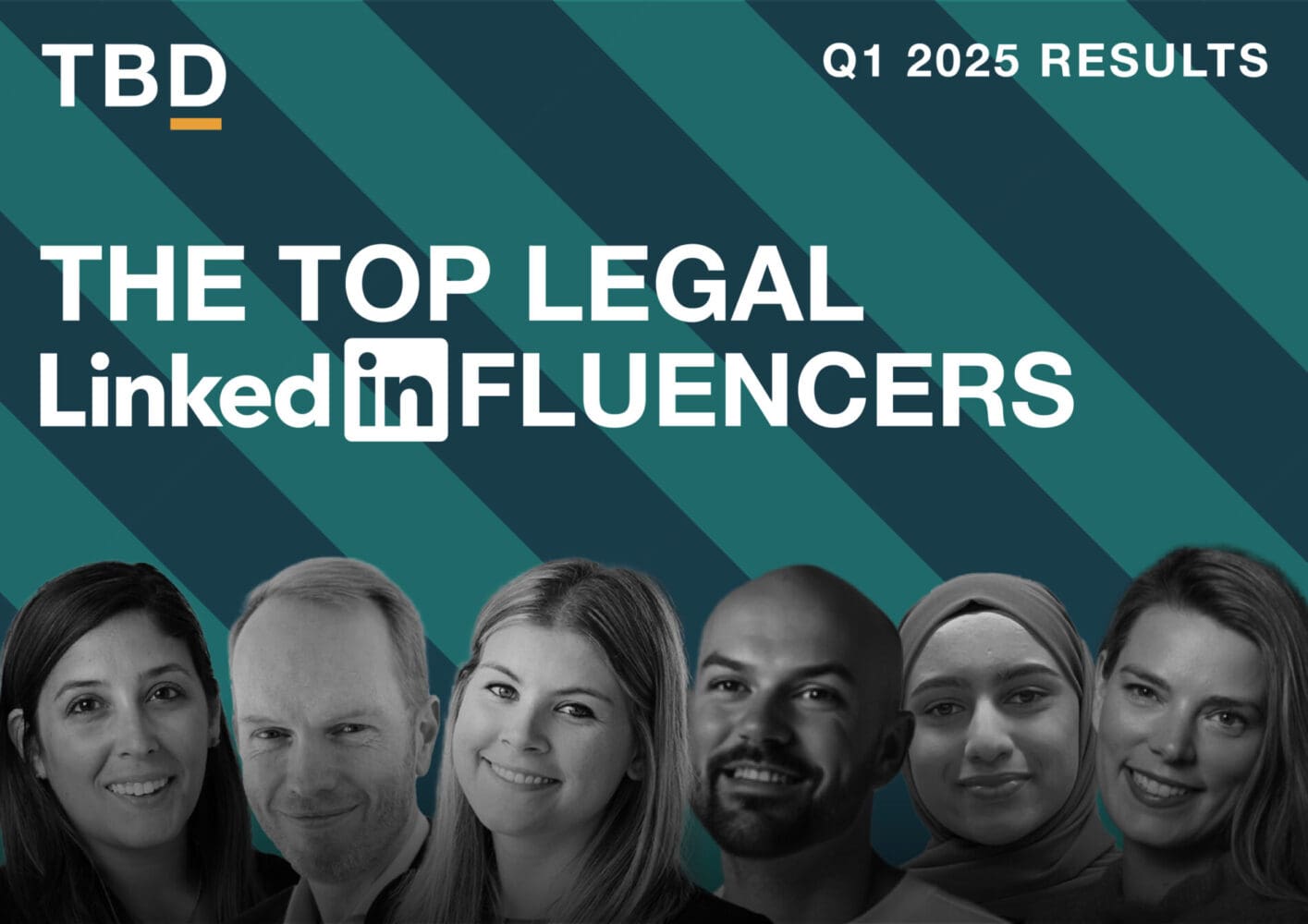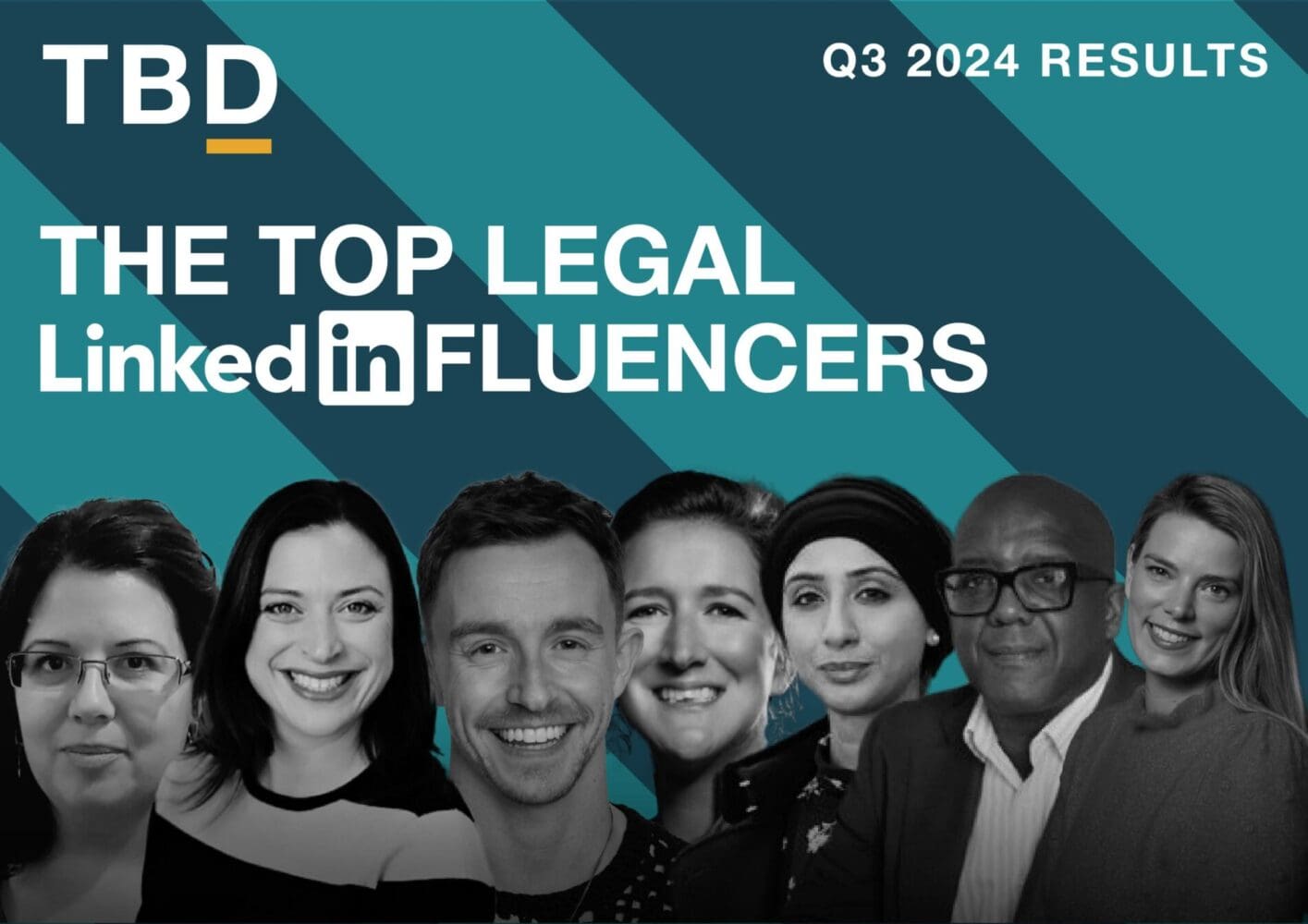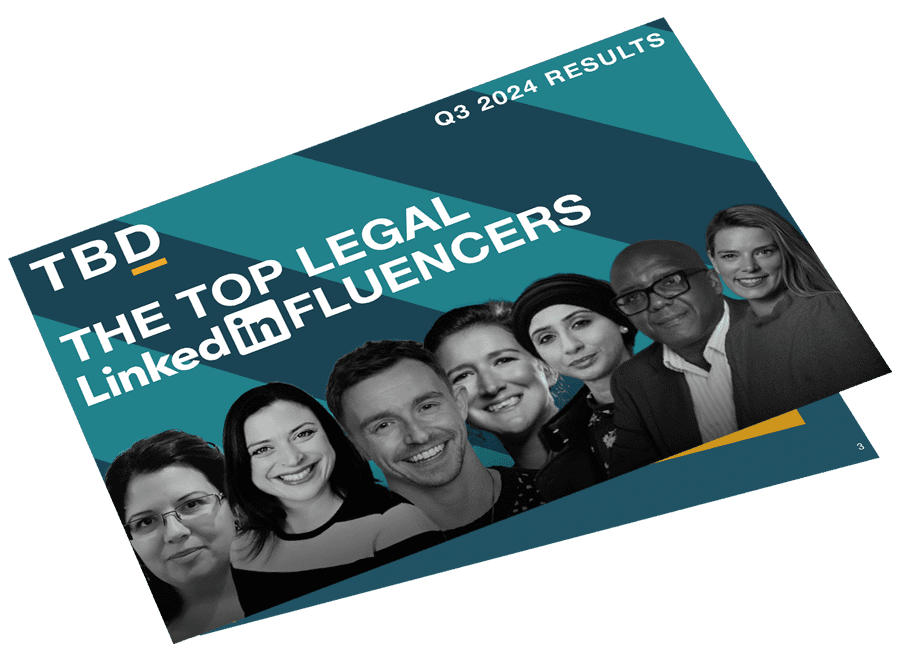Cast your mind back a fortnight and you will recall that I shared my thoughts with you on how to use the holy trinity of media coverage, company posts and personal posts – the triple play, as I call it – to maximise your reach and engagement, and thus your brand-building impact, on LinkedIn.
At this point, we can take it as written that personal posts are a hugely important component in the trifecta of the triple-play strategy, and represent a fine art in themselves, as also discussed in last week’s edition.
So this week, I want to focus instead on the other two points of the triple-play triangle, which is to say media coverage and company posts. With the former in particular, I want to talk about the importance of positive media attention by drawing on some very cool research recently published by our friends at the specialist law firm PR consultancy Byfield.
The Byfield Positive Law Firm Reputation Index – which Michael Evans, Joint MD of Byfield, was kind enough to share with me – illustrates what a media play done well looks like in practice, and the benefits that large firms in particular have reaped as a result.
To create the Index, Byfield used the 2022 Law.com Global 200 to identify the top 20 firms by revenue, then took a basket of top-tier English-language business publications and identified all mentions of these firms over a 12-month period from 1 October 2022 to 30 September 2023.
As Michael himself writes in his introduction to the report, it is the “first index of its kind to measure law firm reputation through positive coverage in the world’s premier business press, read by the global business leaders and decision-makers.” As I say, very cool stuff, especially for a card-carrying data geek like myself.
It will come as little surprise that the top five firms in the Index – Kirkland and Ellis, Baker
McKenzie, Linklaters, Ropes & Gray and Clifford Chance respectively – include two Magic Circle firms. Where things get really interesting is Byfield’s meticulous and granular breakdown of the PR coverage into different categories, topics and practice areas to highlight the various ways that firms can use media stories to profile their expertise and credentials.
I asked Michael what most surprised him about the report’s findings, and what smaller firms outside the global 200 can take away from it:
“Firstly, I was surprised by the wide spread of profile volumes among the top 20 firms. Secondly, the fact that even among the top five firms, the reasons each firm got a lot of coverage varied hugely. Thirdly, just how good Linklaters and Ropes & Gray are at getting top-tier media coverage in their biggest markets, talking about issues that map onto their client base and growth areas. Those two firms really stood out. Investing in your PR team really makes a difference.
“We know from our own work with smaller firms that with a good agency, engaged partners and a clear idea of what you want to talk about, smaller firms can compete with larger ones for top-tier profile in terms of thought leadership and commentary. It is harder when it comes to a firm’s own news, because size matters there. Our research shows, however, that if your partners have something interesting to say on a newsworthy topic, then you can land-top tier coverage.”
I wonder if future editions of the Index could be extended to the top-100 firms, or be given even more granular detail by enriching the metrics with the respective firm’s total number of employees, or working out the amount of coverage achieved per pound of firm revenue, or per pound spent on PR, to gain a yet-deeper insight into whether firms are achieving the reputation they deserve. We use a per employee index when it comes to social media – because otherwise how well do you know you should be doing if you only compare yourself to the big five?
However, even as it stands, I cannot recommend the Byfield Positive Law Firm Reputation Index highly enough to law-firm CMOs keen to find out what the best of the best are getting right in their PR strategy. It clearly shows just how important PR spend remains to large firms in particular in order to bolster their reputation through positive, third-party media coverage, which represents one prong in the trident that is the triple play.
I would now like to turn to the second prong by celebrating the firms that are going great guns in boosting their profile on a per-employee basis via their LinkedIn firm page. And what better way to do so than by busting out some stats?
So without further ado, here is a table from our most recent TBD LinkedInfluencer Report, which shows you the power rankings achieved on LinkedIn by the UK’s top-200 firms, based on their number of employees:

Time period: 1 January to 31 January 2024
We calculated each firm’s power ranking by taking the number of likes they have achieved on LinkedIn, multiplying by four the amount of comments they received (because comments count for a factor of four on the LinkedIn platform), then adding these two figures together to arrive at a power rating score, before dividing this score by the firm’s number of employees – and hey presto, you have your power ranking.
So we can see that, on a per-employee basis, Moore Barlow is the UK’s best-performing firm on LinkedIn within the UK’s top-100 firms by revenue, with Thomson Snell & Passmorecoming in second place. The other three firms to make it into the top five in our table sit within the lower half of the UK’s top-200 firms by revenue, but rightly take their place at the top of these rankings.
Hugdell is an interesting one because it’s the kind of firm that, by default, often says to us that they can’t get LinkedIn to work for them as “their clients are not on there”. Its focus is on med neg and court of protection and so its work on the platform does appeal to private (wealthier?) individuals and to all the referrers and intermediaries, future employees and more. Hurrah for seeing quite how well they do on a per headcount basis. (Quick aside, check out how unstuffy and easy-to-use Hudgell’s website is. More of this please, law firms.)
It’s interesting to see that the largest firm to rank well is Watson Farley & Williams, which has over 1,000 employees – it has come a long old way in a short space of time on social media, as we used to rank them in the lowest quartile in The Digital 100 only two years ago. So kudos to this firm for seriously upping its LinkedIn game in the meantime!
This also shows that, wherever your firm stands today in terms of its LinkedIn performance, it is never too late to turn things around and tell a different story on your company page. Focus on who your audience is, what they already know, what you want them to know by the end of the post, and what you want them to do. And then be consistent in adopting this approach for this audience. It really is that simple.
However, don’t go mistaking simple for easy. Getting your firm’s LinkedIn game on point can be tricky, which is why so many of the firms at the top of our LinkenInfluencer power rankings have approached us for guidance. So If you ever need help with your firm’s LI strategy, just call my name and I’ll be there.
And yes, I did just end this week’s edition of Si’s Matters with a Jackson 5 reference. My work here is done.
In other news
Generation game
As reported in The Law Gazette and throughout much of the legal press in recent days, a major new study by LexisNexis has found that more than a quarter of legal professionals regularly use generative AI in the course of their work.
The City simmers down
Last week, City A.M. reported that the number of legal sector job vacancies in the City saw a huge slump in 2023 as firms returned to pre-pandemic hiring levels.
Not a good look during LGBTQI+ History Month?
Simmons & Simmons has come in for some negative publicity from news outlets including The Telegraph this week, following an internal backlash from employees who question whether the firm’s expansion into Saudi Arabia is compatible with its commitments to LGBTQI+ rights.
Hogan Lovells joins the two billion club
The Lawyer reported this week that, for the first time in its history, Hogan Lovells has joined the elite ranks of firms generating revenue of £2bn a year.
Merger mares
Law.com International ran a great piece this week giving behind-the-scenes insights into the anxieties felt by anonymous insiders as the merger between A&O and Shearman gradually nears its 1 May completion date.







